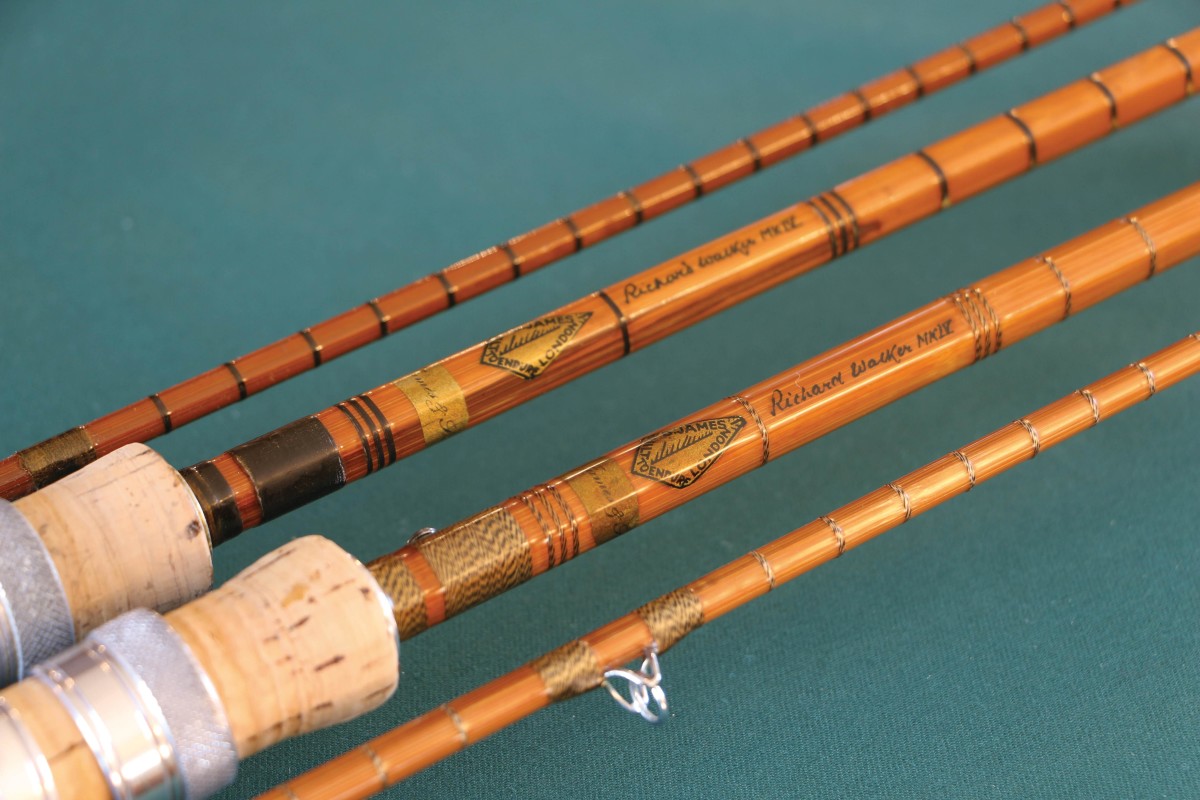
Collective Madness! Vintage And Iconic Carp Rod Collecting
Jonathan Savory looks at carp anglers’ passion for collecting tackle, and considers that most iconic of vintage rods: the B. James & Son Mk IV…
Why did the collector cross the road? The short answer that I don’t know, but they were probably in search of a holy grail of some kind. Either that, or they needed to get to their psychologist’s appointment. As anglers, we are all collectors of sorts, and are all after our own personal holy grail. No matter whether we’re collecting fantastic captures, unforgettable memories, beautiful sunrises, rods, reels, bite alarms, bobbins, or combinations of everything, we’re still collectors, and some of us get utterly obsessive about it.
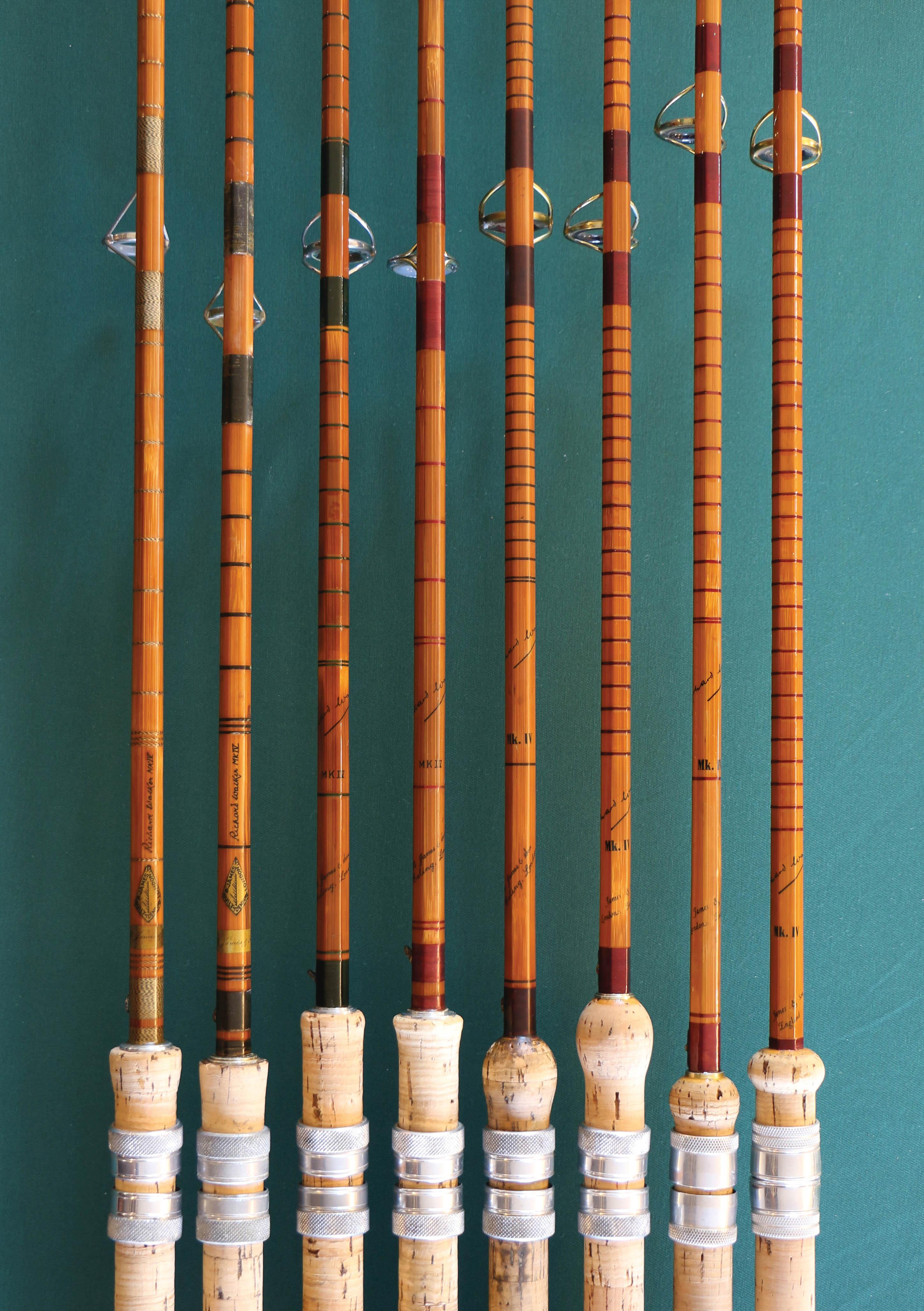
What drives it? Goodness knows. It certainly isn’t much to do with common sense! Here I sit in my man cave (I hate that term, but it’s an uncomfortable truth), surrounded by rods, reels, paintings, floats, prints, monkey climbers, books, fishing-related CDs(!), vintage baskets and bags, bite alarms, magazines; it goes on. The floats have spilled into the kitchen. The reels have spilled everywhere. The rods stand sentinel, peering at me, disdainfully. I haven’t started on stuffed fish (yet), but to do so may herald a death knell, rung by my other obsession that is the beautiful Rachel.
There, I mentioned her; maybe that’ll earn me a stuffed pike? Just a small one.
This addiction occupies more of my time than fishing does, but it holds me so firm, that I doubt I’ll ever escape its grasp. Thankfully, I’m in good company. Try explaining to a non-angler why we so passionately pursue a fish, to simply let it go. Most will shrug; they’ve heard it all before, and no matter how many more times we repeat ourselves, they’ll never get it. Try explaining a collector’s mentality to an angler, though, and most will get it. Why? Because, as I said, we’re all collectors, some more than others. Me? Well, I gave up resisting it a long while ago. I’m a lost cause. Show me a ten-foot, two-piece split cane and I’m a quivering wreck.
More of a man in the face of such encounters is my good friend, Chris Sandford. Has he always been so stoic? Well, he’s been collecting a good few more years than I have, and I’m sure, that prior to his maturing into a wise and considered collecting type, at one time he chomped every bit as I do to ‘get it bought’. Indeed, only recently, he revealed the fact. A very rare and early MK IV carp rod had become available, one of the first batch. They made only around 20 of those, way back in 1952… the holy grail! “Get it bought!” said Chris, “we mustn’t let it get away… who knows where it might end up!”
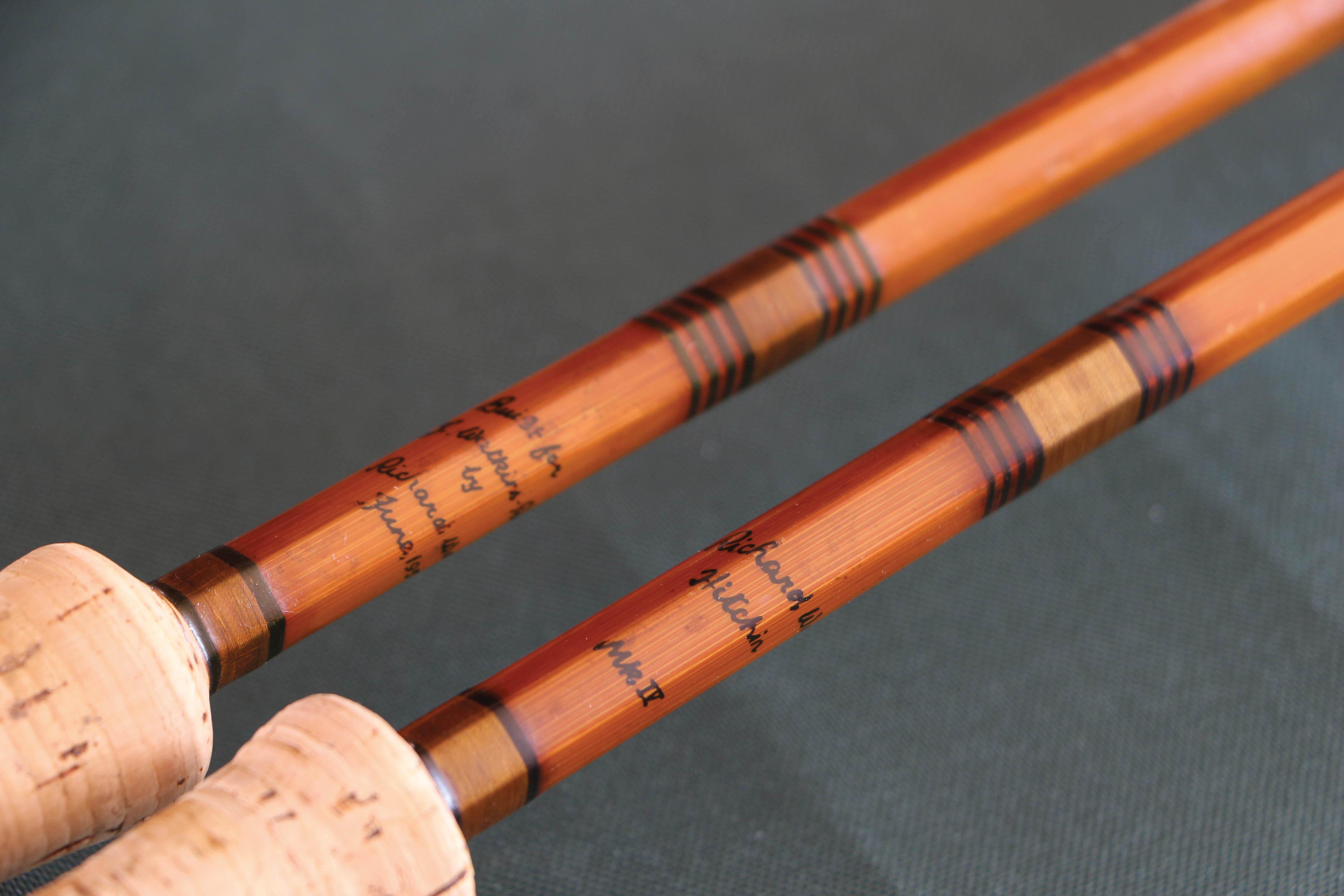
And there it is, as if proof were needed, that collecting leads to madness, and that all collectors are mad… me included, and probably you too! It doesn’t have to be tackle; even if you’re just collecting captures or sunrises, you have to admit, it’s a bit odd (sunrises, because I collect those more than captures… make what you will of that!).
You may already know that Chris Sandford owns the rod, the one that caught Clarissa, and made by Walker’s own hand from a single piece of Tonkin cane, flame-tempered, split, planed, glued, and finished in that magical garden shed where he made the stuff of dreams. The rod became the blueprint for virtually every carp rod produced between 1952 and the early ’70s. Some legacy, with 15,000 made by B. James alone, and probably at least the same number by the other makers to the same blueprint. Wow! That just doesn’t happen anymore.
Tackle manufacturers are wiser now. They know the truth: that we’re all collector tackle-tarts obsessed with the latest ‘new development’. Likewise, we all know we’re being drip-fed, and that next year’s new development could equally be released today, but if they did, what would they sell to us next year? It wasn’t like that back then, so the MK IV remained the pinnacle of carp tackle for nearly thirty years, and rightly so, for it’s a great rod, one of the most iconic rods of all time, and perfectly designed to the brief: to land large fish on light tackle, and to accurately cast a light bait such as freelined bread paste or potato. Titter not ye young ’uns. That’s what they used, and to good effect too! It’s difficult to argue with a 44lb carp from 1952, an age when a double was a very respectable fish, a twenty an absolute monster, and anything above that simply mythical. When Walker caught Clarissa, Bernard Venables said, “We didn’t know such monsters existed.” Clarissa was monumental. The record wasn’t just broken, it was obliterated, and the new one stood for nearly 38 years until Yates caught the Bishop in 1980.
But back to the point. Chris (Sandford) owns the rod that caught Clarissa. We got chatting and he invited me over to say hello, share a cuppa and see the rod. It’s funny how, when you’re really into this kind of stuff, a fishing rod can completely knock you sideways. But that’s exactly what it felt like, and not just the first time, every time since. I suppose that’s the collector mentality again.
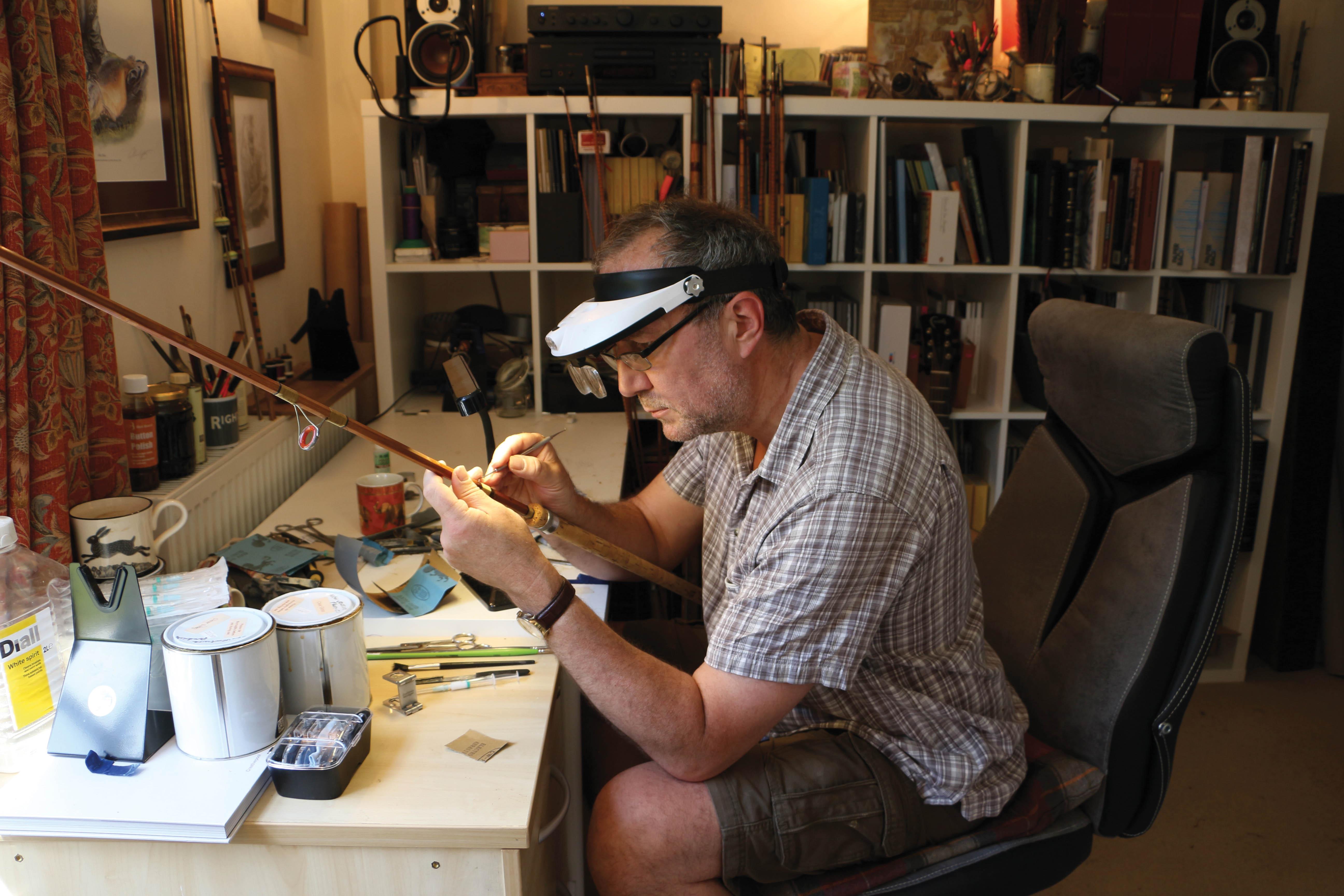
A year or two after that first meeting, Chris asked me if I’d carry out a sympathetic restoration of the Clarissa rod, and I can now say that I’ve been lucky enough to have got closer to the very fibre of that rod than anybody since Walker built it, yet still it sends me all aquiver when I see it. Why is it so important? Well, the fact that it caught the record is almost a side issue; its real legacy is the impact it had on carp fishing. Before the MK IV, there was no commercially available carp rod; indeed there was no tackle of any kind specifically designed for the pursuit of carp. Until then, carp fishing was regarded as a futile pastime; they were deemed virtually impossible to hook, and even harder to land. Walker was determined to overturn this thinking, but first he needed a suitable rod.
The MK I, II and III were built as developments of existing rod designs, then rejected. For the MK IV, Walker went back to the drawing board and designed a bespoke taper using his engineering pedigree. The result was a success, and in capturing Clarissa on his own, purpose-designed rod, he not only proved that large carp could be hooked, but crucially that they could be landed. With that, Walker didn’t just change the face of carp angling, he created it.
Walker was something of an angling philanthropist. He is famed for replying personally to all correspondence to his weekly column in Angling Times,and that in the days of the handwritten letter. He was equally generous in his sharing of knowledge; he publicised the taper measurements of his MK IV design, and while only the B. James & Son of Ealing rods carried Walker’s name, virtually every other rod builder crafted their own version. Understandably, the B. James rods are the most widely sought these days, although it has to be said that some (not all!) of the other makers’ rods are not only as good, but better, and with their added rarity they have become, in some cases, quite valuable. Generally speaking, though, it’s the B. James rods that attract the interest.
So what’s the deal if you’ve got a MK IV kicking about, or if you’re interested in buying one? Well, I’d say that if you’ve got one, cherish it and use it; it’s a much nicer experience than you might imagine. Don’t be concerned that it feels a little on the floppy side. That’s action, not power. One day I’ll prove the point in a video, but basic physics say you exert more pulling power with a through-action rod with a low test curve, than one with a tip action and higher test curve; it’s basic torque. With a MK IV, you’ll be able to feel the fish like you have done on no other rod; it’s an absolute joy. That said, I use carbon most of the time. You can’t be casting a decent-sized lead or any kind of bag with a MK IV! But for margin fishing, stalking and floater work, I’d go with a MK IV every time. I do not have to dress in tweed to do so, nor do I need to wear a funny hat! I’m not trying to be some kind of traditionalist, I just like them, and they’re a pleasure to fish with. They look beautiful. They’ve got soul.
So numerous are the different makers’ versions of the MK IV, that there’s a whole book to write on that; indeed one day, I’ll get around to finishing it. But for now, let’s stick with the B. James version…
The first batch of twenty or so produced in late 1952, were inspected and signed by Richard Walker himself, and as you can imagine, these are highly prized, sporting the early ‘Built to Endure’ logo and with Walker’s signature along the blank. Further rods exist with the same logo and handwritten signature, yet not actually written by Walker. On the whole, these are genuine. The signature is no fakery, and no attempt was made to make it appear as if it were from Walker’s hand. Demand simply dictated that, after that first batch, Walker did not have time to personally sign every rod - neither Walker, nor B. James could have foreseen the new interest in carp angling that Walker’s record would generate. After the rods with the original logo and handwritten signatures, B. James started using a transfer depicting Walker’s signature.
Various recognised versions of the MK IV split-cane rod appeared until 1966, when cane finally succumbed to the new era of glass fibre. It must be remembered that in the fifties and sixties, whilst craftsmanship was of a high level, brand and product consistency were nothing compared to what we are used to today. Often, I hear of collectors talking of specific handle lengths for the MK IV, or ring spacings. The thing is, no such specifics exist. If I were to stand all my MK IV rods together in a row, the differences in handle length and ring spacing would be immediately apparent. Indeed, in the main feature picture for this article, all the rod butts are exactly aligned. As you can see, the handle lengths are all different, as are the positions of the transfers, rings and whippings. Yet, despite these slight variations, there are certain recognised versions, as featured in the leading photograph, left to right, as detailed below:
First Version - October 1952
‘Built to Endure’ first batch, inspected and signed personally by Richard Walker. Trumpet-shaped handle, shoulder collar, ‘Built to Endure’ transfer label, B. James’ ‘Ealing London’ address transfer, hook-keeper ring. Translucent milky agate butt and tip rings, spigotted ferrule, non-branded rod bag. Most of these examples feature very dark green (almost black) silk whippings, yet some are claret silk, others black/gold ‘Jasper’ (the Jasper, or two-tone whipping was originally black and white, the white turning to a dark gold over the years with the discolouring of the varnish). Blanks supplied by the famous Bob Southwell (also known as ‘The Captain Croydon’), regarded as the finest split-cane blank builder of his time, and possibly of all time. Pictured are the Jasper (1) and Green (2). Value? Well, these are rather like hens’ teeth. Values range from £1,500 for a poor example in need of restoration, £2,000 for a tired ‘user’, to £3,000 to £4,000 for good examples. With two people bidding in the same room, who knows?

Second Version - 1953-1954
Trumpet handle, green or claret silk whippings, shoulder collar, B. James ‘Ealing London’ address transfer, clear agate butt and tip rings, spigotted ferrule, non-branded rod bag. Blanks supplied by Bob Southwell. Value? These are very sought after, particularly (although for no real reason) the green-whipped ones. Values range from £350 for a poor example in need of restoration, £500 for a tired ‘user’, to £750 to £1,000 for really good examples.

Third Version - 1955
Onion handle, dark claret ring whippings with almost black intermediate whippings, no shoulder collar, B. James ‘Ealing London’ address transfer, amber agate butt and tip rings, standard (non-spigotted) ferrule, branded rod bag. Blanks supplied by Bob Southwell. Very close concentric intermediate whippings by the famed Mrs Murgett, wife of fishing columnist, Frank Murgett. Examples of Nora Murgett’s rod whipping only seem to appear on these Ealing/onion examples. Highly sought after, rarely seen, very very collectable. Value? Get an early one of these and you’re still likely to have a Southwell blank. Add the wonderful Mrs Murgett to the mix and you’ve got a truly beautiful and rare fishing rod, an absolute joy to use, and at a lesser price than the earlier trumpet shape. Values range from £200 for a poor example in need of restoration, £400 for a tired ‘user’, to £700 to £800 for really good examples.



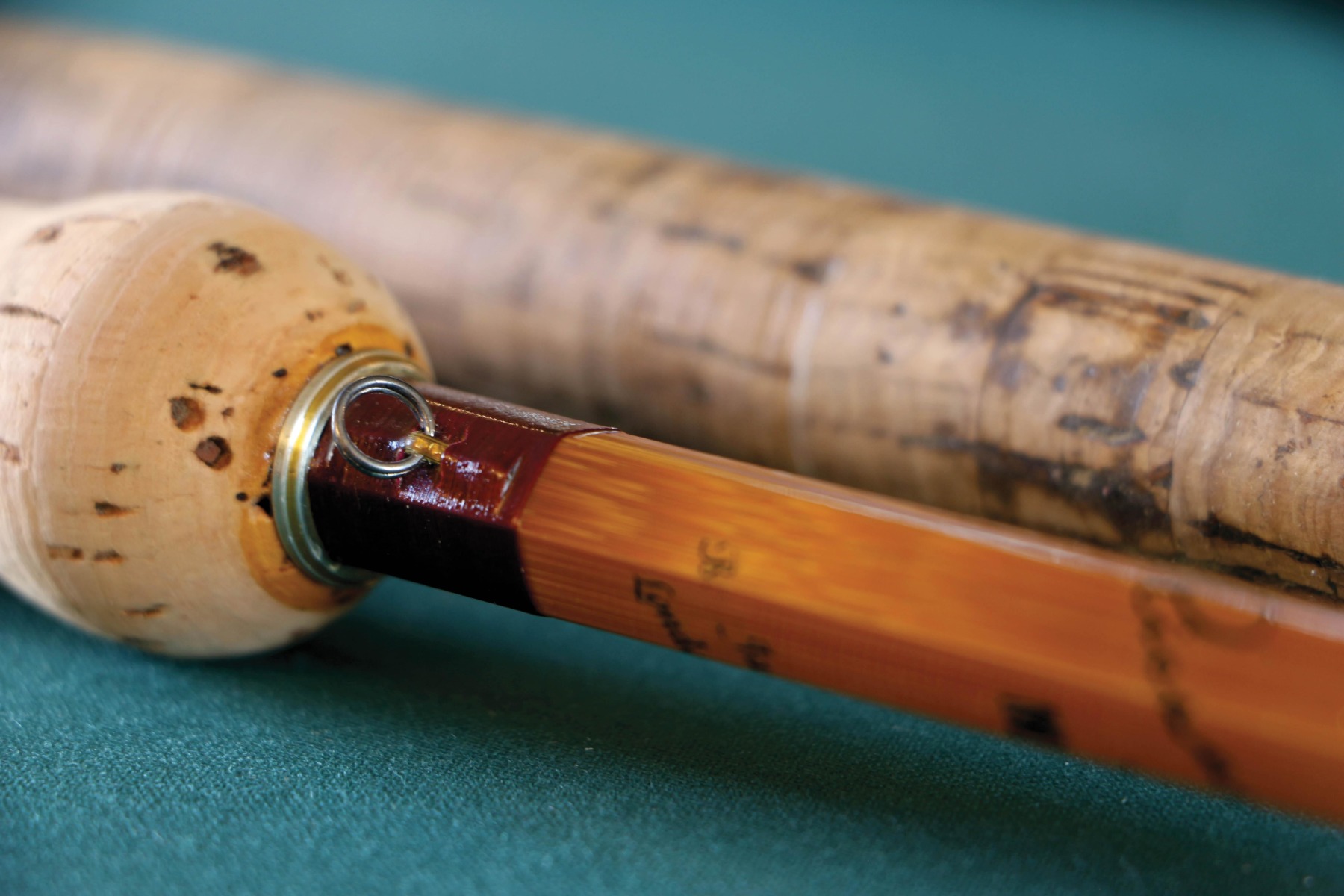
Fourth Version - 1955 to early 1958
Onion handle, claret whippings throughout, shoulder collar, B.James ‘London England’ address transfer, amber agate butt and tip rings, standard (non-spigotted) ferrule, branded rod bag. Value? I’d put this one as the go-to rod for those who want a genuine MK IV feel, for a modest price. By this time, Bob Southwell was no longer supplying blanks, and all whippings were being done mechanically. However, the rods themselves were still of excellent quality. Close-whipped versions (mechanically, not Mrs Murgett) were still available, as was green whipping, although only by special order. Values range from £150 for a poor example in need of restoration, £225 for a tired ‘user’, to £400 for really good examples.

Fifth Version - 1958
‘Hybrid’ onion handle (it’s a bit like a squashed onion!), claret whippings, shoulder collar, B. James ‘London England’ address transfer, amber agate butt and tip rings, standard (non-spigotted) ferrule, branded rod bag. Not featured in any of the previously published lists, yet I’ve seen enough of this variety to be confident it warrants being a recognised version in its own right. Of a heavier taper than previous rods, by all accounts in response to variations in the rigidity of Tonkin cane supplies at the time, they provide a slightly sturdier feel, yet with the same forgiving action. One of my favourite stalking rods. Values range from £150 for a poor example in need of restoration, £225 for a tired ‘user’, to £400 for really good examples.

Sixth (and final) Version - 1958 to 1966
Doughnut handle, claret whippings throughout, no shoulder collar, B. James ‘England’ address transfer, amber agate butt and tip rings, standard (non-spigotted) ferrule, branded rod bag. Values range from £125 for a poor example in need of restoration, £200 for a tired ‘user’, to £325 for really good examples.

And there it is, everything you need for time travel to BC (before carbon). There’s a lot more besides B. James, and it’s my duty to warn you, this is a very, very slippery slope, but, it’s one I’ve enjoyed sliding down and hopefully I’m nowhere near the bottom yet! One thing though, as my good friend Mr Sandford reminded me the other day, there is one absolutely essential factor in this collecting lark: if you have a partner, they must be a saint!



